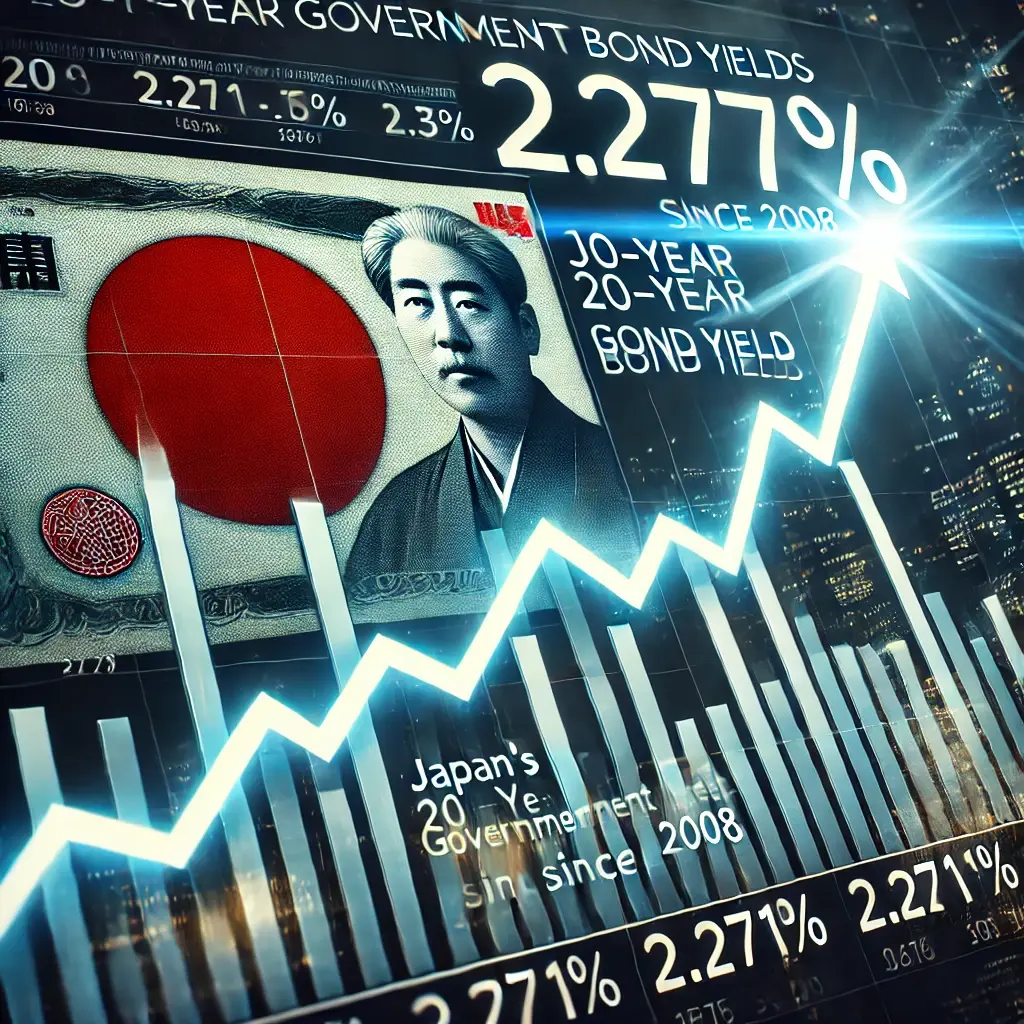
Japan's bond market is witnessing a significant shift as the 20-year government bond yield has surged to its highest level since 2008. This marks a historic change in Japan’s economic landscape, reflecting a shift in its monetary policy stance. Meanwhile, a surprising development is unfolding in the global bond markets—Japan’s 30-year bond yield has now surpassed China’s for the first time in decades.
Japan’s Bond Yield Surge
The Japanese 20-year bond yield recently touched 2.271%, surpassing levels not seen since the 2008 Global Financial Crisis. This signals a sharp deviation from Japan’s traditionally low-yield environment, driven by expectations of tighter monetary policy.
For decades, Japan’s ultra-loose monetary policy, including negative interest rates and yield curve control (YCC), suppressed bond yields. However, with inflationary pressures rising and the Bank of Japan (BOJ) signaling a policy shift, yields have begun climbing rapidly.
China vs. Japan: A Reversal in Bond Yields
A striking development in global fixed-income markets is that Japan’s 30-year bond yield has now surpassed China’s. Historically, China’s yields were higher due to its stronger economic growth and higher inflation expectations. However, recent trends indicate:
China’s 30-year yield has been on a steady decline, reflecting economic slowdown and aggressive rate cuts by the People’s Bank of China (PBOC).
Japan’s 30-year yield, on the other hand, has been on an upward trajectory as the BOJ moves away from its ultra-loose policies.
This shift is significant because, even during the 2008 Financial Crisis, Japan’s yields never exceeded China’s. It underscores a broader structural change in the Japanese economy.
What’s Driving Japan’s Rate Hike Expectations?
Several factors contribute to Japan’s rising yields:
1. End of Negative Interest Rates: The BOJ is expected to abandon its negative rate policy, which has been in place since 2016.
2. Rising Inflation: Japan’s inflation has remained above the BOJ’s 2% target, prompting the need for policy tightening.
3. Global Yield Dynamics: As the U.S. Federal Reserve keeps rates elevated, global bond markets are adjusting, pushing Japanese yields higher.
4. Waning Demand for Japanese Bonds: With higher interest rates in global markets, Japanese bonds are becoming less attractive, forcing yields higher.
China’s Monetary Easing: The Opposite Strategy
While Japan tightens policy, China is cutting rates to stimulate its slowing economy. Key reasons include:
Weak consumer demand and real estate sector distress.
Deflationary pressures, contrasting with Japan’s inflation concerns.
The PBOC’s aggressive easing to support growth, leading to lower bond yields.
Implications for Global Markets
1.Currency Impact: A rising Japanese yen could weaken the U.S. dollar, impacting global forex markets.
2. Stock Market Effects: Higher rates in Japan could reduce liquidity in Japanese equities, potentially leading to market volatility.
3. Shifting Investment Strategies: Investors may favor Japanese bonds over Chinese bonds due to better returns.
Japan’s bond yield surge marks a once-in-a-generation shift, signaling the end of ultra-loose monetary policy. Meanwhile, China’s bond yields dropping below Japan’s underscores the growing economic divergence between the two nations. As markets adjust to these changes, investors should keep a close eye on BOJ’s policy moves and the global implications of these yield shifts.




